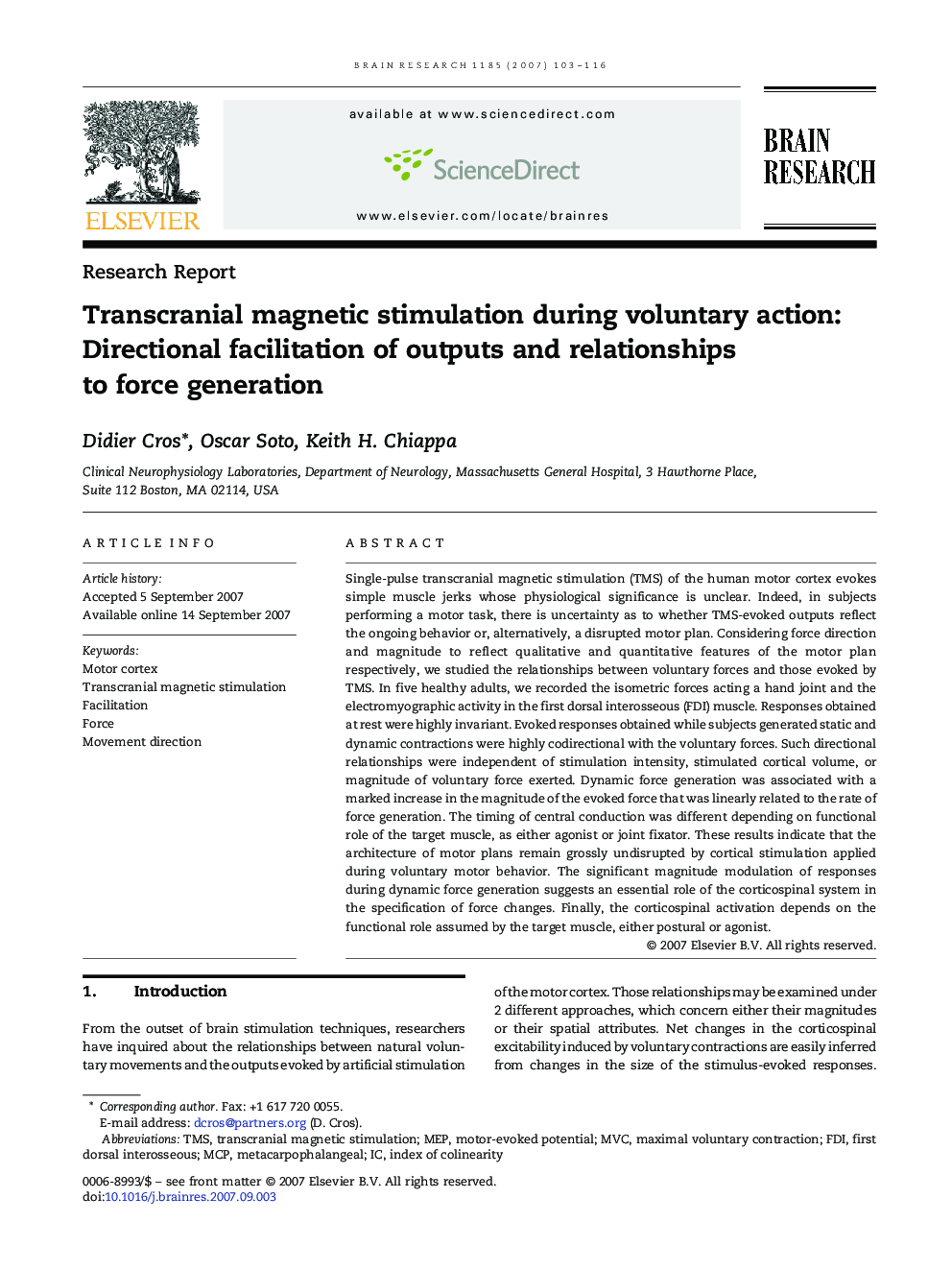| Article ID | Journal | Published Year | Pages | File Type |
|---|---|---|---|---|
| 4330228 | Brain Research | 2007 | 14 Pages |
Single-pulse transcranial magnetic stimulation (TMS) of the human motor cortex evokes simple muscle jerks whose physiological significance is unclear. Indeed, in subjects performing a motor task, there is uncertainty as to whether TMS-evoked outputs reflect the ongoing behavior or, alternatively, a disrupted motor plan. Considering force direction and magnitude to reflect qualitative and quantitative features of the motor plan respectively, we studied the relationships between voluntary forces and those evoked by TMS. In five healthy adults, we recorded the isometric forces acting a hand joint and the electromyographic activity in the first dorsal interosseous (FDI) muscle. Responses obtained at rest were highly invariant. Evoked responses obtained while subjects generated static and dynamic contractions were highly codirectional with the voluntary forces. Such directional relationships were independent of stimulation intensity, stimulated cortical volume, or magnitude of voluntary force exerted. Dynamic force generation was associated with a marked increase in the magnitude of the evoked force that was linearly related to the rate of force generation. The timing of central conduction was different depending on functional role of the target muscle, as either agonist or joint fixator. These results indicate that the architecture of motor plans remain grossly undisrupted by cortical stimulation applied during voluntary motor behavior. The significant magnitude modulation of responses during dynamic force generation suggests an essential role of the corticospinal system in the specification of force changes. Finally, the corticospinal activation depends on the functional role assumed by the target muscle, either postural or agonist.
